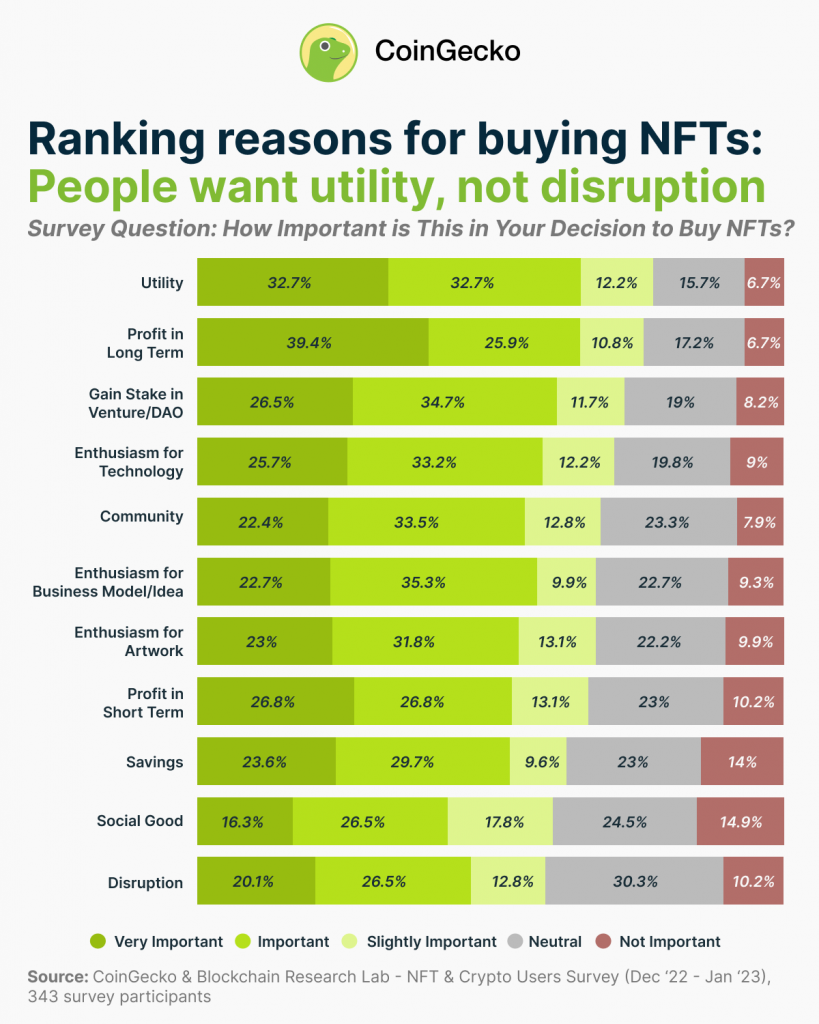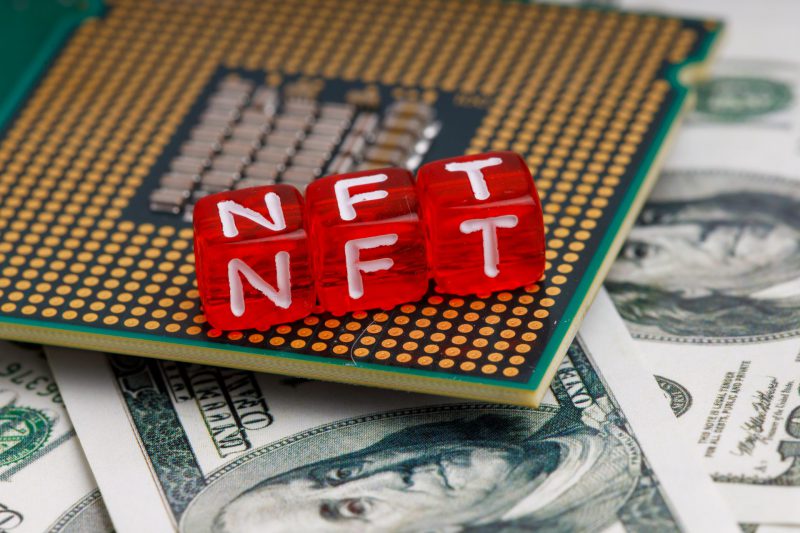Non-fungible tokens or NFTs emerged as a game changer for artists and art enthusiasts. This technology witnessed immense growth in no time. With A-listers entering the landscape, it further boosted the popularity and legitimacy of a niche digital asset.
But why are individuals pouring so much money into NFTs? Is it limited to investment and pleasure alone? A recent study conducted by CoinGecko dived into why the community is investing in these tokens.
According to the research, the utility of the token is categorized as the most important reason to make a purchase. “Using NFTs for their intended function” received a 77.6% rating in terms of importance. About three out of every four owners think about the value of a collection or the advantages of ownership before making a purchase.
Non-fungible tokens aren’t just limited to digital collectibles. Even though NFTs initially just served as profile images and in-game goods in blockchain games and other applications, their variety is expanding as new use cases are being addressed by networks.


Long-term vs. short-term profits
As seen in the above image, long-term profits are considered to be of great importance to the masses. The rate of importance for this category is 76.1%. However, making a profit in the short term was ranked in the eighth position with 66.8% significance.
The process of making short-term profits is known as “flipping.” During this period, holders buy with the possibility of selling at a higher price almost immediately after the purchase. Elaborating on this, the report read,
“That said, flipping NFTs requires holders to actively monitor and time the market, which might explain why it is a less popular reason than investing in NFTs for the longer term.”
It is estimated that when it comes to influencing purchase decisions, short-term earnings are 9.3 percentage points less significant than long-term profits. Therefore, only two out of ten holders are ambivalent about flipping. However, one in ten buyers does not think about the potential short-term gains while purchasing these tokens.
Gain a stake in the venture and become part of the community
Purchasing an NFT to become a stakeholder is the third most important reason behind the purchase of these tokens. An astounding 7 out of 10 NFT holders buy an NFT to garner a stake in the network or even a decentralized autonomous organization [DAO].
About 68.8% purchase these assets as they intend to follow or join a community or project. This, however, ranks fifth on the list. Even if it may not be everyone’s motive for purchasing the NFT, the community is still crucial to the success of NFT collections. As a result, teams frequently make significant investments in creating and sustaining vibrant communities. This further elaborated on why it gets the second-lowest rating of “Not Important.”
Enthusiasm for the technology, business model, and artwork of the NFT collection
The new technologies that are being developed now depart from the norm and allow for innovation. The fourth most significant factor is a personal passion for the technology of the NFT collection. When determining whether to invest in an NFT, seven out of ten NFT holders consider the technology that underpins the NFT.
Introducing or having a particular preference for a particular business model or idea seems to be scoring highly. About 67.9% of respondents think that their decision to buy was influenced by their own passion for the NFT collection’s artwork as well as the business strategy or idea. With a plethora of artists in the market, artwork designs are also considered to be quite essential in purchasing NFTs.
Disruption is not very important for NFT holders
Along with the above-mentioned reasons, savings, and social good also influence the purchase of these tokens by 63% and 60% respectively. The last and least important reason for becoming NFT holders is “Disrupting established structures or industries.”
Nevertheless, roughly 6 out of 10 investors value disruption. NFTs have brought about advances in the fields of digital ownership, content production, identification, and more, altering and improving upon traditional methods of doing conventional activities.
While these tokens did lose steam for some time, they seemed to be making a comeback again in 2023.





